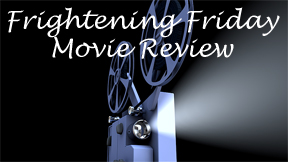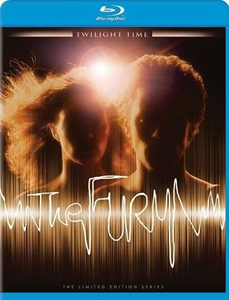“The Fury” (1978) is no one’s pick for best or worst Brian De Palma movie, but it’s in contention for weirdest. A couple years after “Carrie,” De Palma still has supernatural horror on his mind and gives a bigger role to Amy Irving, whose bizarre underuse is one of that Stephen King adaptation’s weaknesses.
Alternately overwritten and underwritten by John Farris, “The Fury” is essentially a superhero origin story about Irving’s Gillian, who has telekinetic powers, can spirit-walk into people’s memories, and causes blood to ooze from orifices or old wounds of observers in the vicinity.
The way Farris gets to Gillian – ultimately the movie’s heart – is bizarre and unwieldy. We start with a different telekinetic young adult, Robin (Andrew Stevens). De Palma briskly and efficiently works up audience sympathy for Robin and his dad, Peter (Kirk Douglas).

“The Fury” (1978)
Director: Brian De Palma
Writer: John Farris
Stars: Kirk Douglas, John Cassavetes, Amy Irving
They’re vacationing at a Middle Eastern beach resort when “terrorists” attack, but amid the melee, Peter realizes his “friend” Childress (John Cassavetes) has staged this whole thing for the sake of killing him and stealing his son. Childress aims to study Robin’s powers at his institute, Paragon; it’s a Brotherhood of Evil Mutants type of facility without quite as many comic-book trappings.
A revenge tale, at first
The opening sequence effectively sets up a delicious revenge tale as Peter – believing Robin is still alive (which he is, although for some reason other characters speak of him being dead) — begins his quest to rescue his son and pay back Childress. Not necessarily in that order.
Peter is nominally “furious,” but Douglass soon plays him like an old-school action/spy hero as he scales the side of a building in his boxers, borrows clothes from shocked apartment dwellers, commandeers a police car and goes on a successful evasion of the baddies through fog-shrouded road construction like he’s done this 100 times before. “The Fury” is in the tone of a light Hitchcock actioner like “North by Northwest” for a while.
So how does Irving’s Gillian end up being the main character? Well, Paragon has plucked the college co-ed off a Chicago beach (the film must’ve got a discount on beach shooting access), stocking its roster of telekinetic dream-walkers. The plot’s convolutions are mitigated because we sense the point of all this is that Peter and Gillian will meld their respective revenge missions and rescue Robin. Yet the convolutions cause a slowdown as we watch Gillian be tested at the facility.
As effectively sinister as Cassavettes’ performance is, I feel sorry for Paragon’s personnel because they are so in over their heads. Earlier in the decade, the notion of an evil group with unexplained motives was chilling in movies such as “The Parallax View,” but it’s silly in “The Fury.”
Paragon is gathering information on Robin and Gillian – and perhaps others with the X gene – but it seems clear they can’t ultimately control them. “The Fury” tries to spice things up with a twist when we reconnect with Robin, but by this time the story has gone off the rails and I miss the straightforward revenge plot.
Maestro in service of shlock
“The Fury” might be the worst movie to have a great John Williams soundtrack, as the young maestro blends “Star Wars”-ian thrill-ride pieces with foreboding horror tracks. De Palma, as is his wont, does some technically impressive stuff, like showing Gillian’s dream-walking by rear-projecting a scene featuring Robin and having the actress stand in front of the scene. Watching and hearing only bits and pieces, “The Fury” could fake you out as being good.
But at another moment, the director gets shockingly lazy as Paragon personnel show Gillian footage of the opening beach attack on Peter and Robin. Granted, we had seen Childress’ team with cameras in that sequence, but the issue is that Gillian is not seeing raw amateur video. She’s seeing artistic, cinematic footage from “The Fury,” including close-ups of Robin’s reactions.
We can forgive cheesy staging if a story is thrilling and suspenseful, but because “The Fury” isn’t, I notice a flurry of unconvincing death scenes in the back half. In no less than three cases, it seems people are hurt but not necessarily dead, but the script intends for them to be instantly killed.
Then there’s the final, show-offy special effects shot, and I was thinking “I bet De Palma will cut to the credits,” and I was right. There are tons of unanswered things in “The Fury” – including what Paragon’s broader aims are – but both the movie and I as a viewer had lost focus and interest.
De Palma often doesn’t know how to end a movie. Ironically, the explosive final shot (featured in many documentaries about special effects) is memorable. Unfortunately, “The Fury” is a case where De Palma and Farris don’t know what to do with the entire back half of the film.


